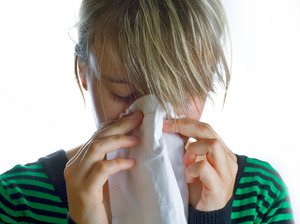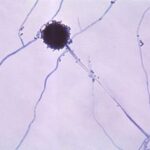When the first cold day hits, you shiver with dread. Not from the dropping temperatures, but because you know that with the coming of winter comes sickness — no matter how much antibacterial gel you use. The culprit might not be a cold after all, however, but rather something even more common during the wet, soggy winter months. Mold.
While most people can tolerate certain amounts of mold, according to the Mayo Clinic, much like seasonal allergies, many sensitive people react negatively when mold spore counts rise. In fact, mold is even more insidious than seasonal allergies because mold spores are not only outside, but inside our homes and in our food as well.
Many sufferers of mold allergies notice that their symptoms follow a particular pattern that often starts with the arrival of a rainstorm. As the air becomes increasingly damp, discomfort increases with the symptoms being surprisingly similar to that of a cold or allergies — and they are.
Symptoms of mold allergies include the following:
- Sneezing
- Itchy, watery eyes
- Body aches
- Rashes
- Hives
While these symptoms are effectively alleviated with antihistamines, the unknowing sufferer often mistreats symptoms with cold medication, forcing the body to rely on its own devices. Since recovery doesn’t begin until after the rain stops, the cycle is unnecessarily lengthened, leading the sufferer to believe that the cause of the discomfort is a seasonal cold rather than mold.
As well, many commonly consumed foods contain high levels of mold. While eating these foods in high quantities is enough to trigger allergy symptoms in the best of situations, eating them when already overwhelmed by mold not only further aggravates symptoms, but hampers the body’s ability to neutralize the allergen. In fact, as you will see below, a favorite food of many, combination pizza, is one of a mold allergy sufferer’s worst nightmare.
- Yeast breads and other yeast products
- Mushrooms
- Cheese
- Dried fruits such as apricots, raisins and prunes
- Canned juices
- Processed lunch meats, pepperoni, sausage and hot dogs
- Canned tomatoes
- Wine and beer
- Fermented foods such as soy sauce and sauerkraut
- Pickles, olives and other vinegar-containing foods such as catsup, salad dressing and mayonnaise
Suggestions for Relief:
- Take antihistamines at first signs of symptoms
- Flush nasal cavity
- Avoid foods containing high levels of mold
- Open windows to allow spores inside to dissipate
- Keep window tracks clean and free of mold spores
- Remove plants from house to avoid mold accumulation in soil
If you suspect you have a mold allergy, your doctor can perform a simple, in office test to confirm your suspicions. The good news is that if it is positive, relief is in sight. Simply employ the tips discussed above and soon you will be enjoying a healthier winter season.




